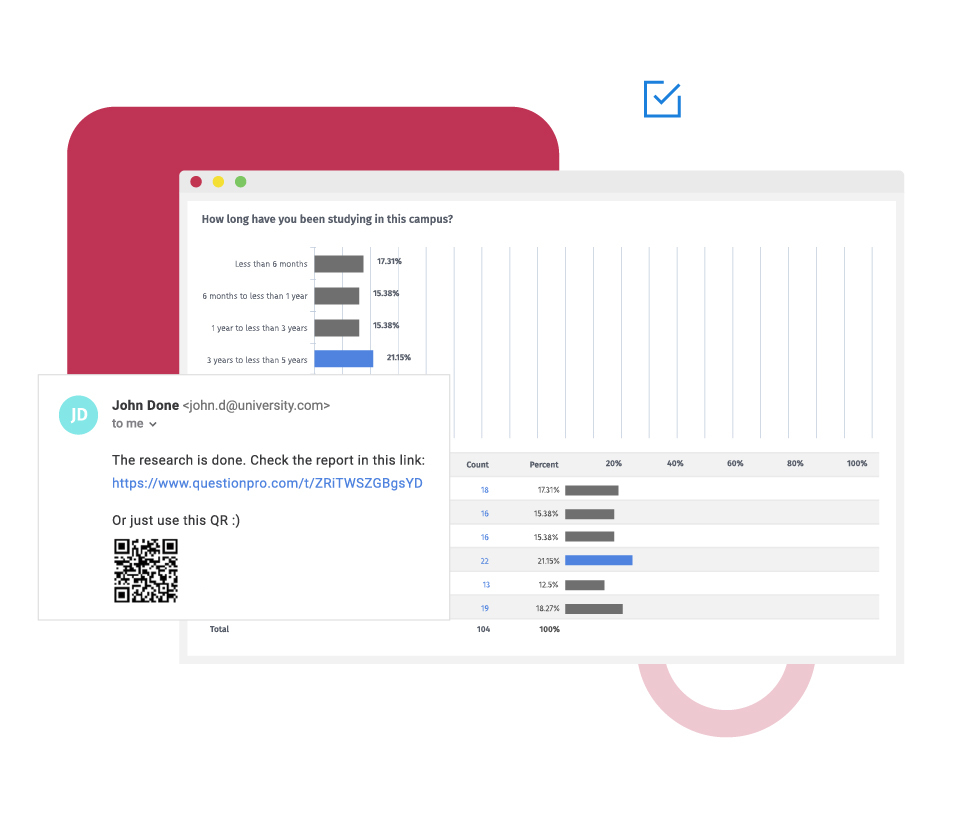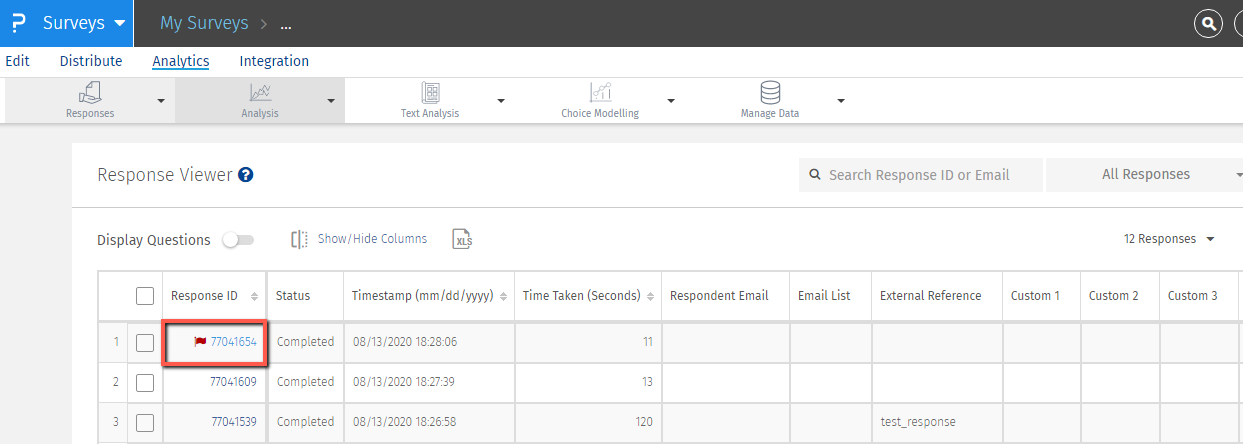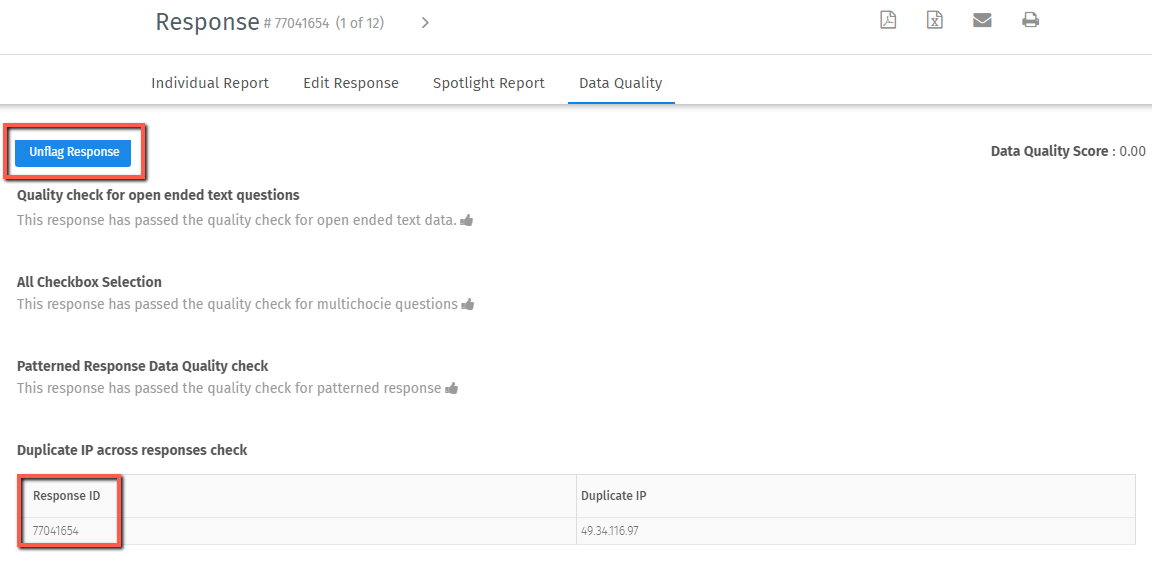Accuracy: The insights gained from the survey data can be trusted only if the data is free from errors. It must imitate real-life situations and holds true for both quantitative and qualitative data. The accuracy of research data depends on the honest answers of the respondents and the right demographic representation in the target audience.
Completeness: Respondents must answer all questions in the survey to be considered a complete response. Having answers to only some questions doesn't give an idea of the whole picture.
Validity: Data is considered valid if it's in the right format and range. You must be able to collect data that can be readily visualized and used in a format that makes sense.
Relevancy: Data can be time-sensitive. The research conducted five years ago may not be relevant now. The survey results must be fresh and reflect the current reality.
QuestionPro lets you find and flag the errors, bad or duplicate survey data without manual intervention. Our tool accesses each answer and has full control over repetitive values, spikes, and spoofing. The result is clean, accurate, and quality data that can be used to gain actionable insights.
Example of high-quality data
Consider a scenario in which a respondent tries to answer a survey multiple times. If allowed, it will lead to bad data and affect data quality. With data quality check enabled, the duplicate responses will be flagged. The users have an option to review the answer and unflag it.

In the example below, the first response was considered valid, but the second response from the same IP address was be marked duplicate.

Data quality in QuestionPro surveys
QuestionPro's data quality tool can check the data quality of textual responses collected through open-ended questions, and quantitative data collected from multiple choice and graphical questions.
QuestionPro improved data quality by correcting below errors in the survey results:
Learn more: Data quality - One-word answers
Learn more: Duplicate text across responses
Learn more: Data quality - All checkboxes selected
Learn more: Patterned responses
Learn more: Duplicate IP across responses
Learn more: Speed traps
Learn more: Gibberish words
Why is data quality important in research?
Researchers conduct surveys to derive value and insights from the data collected. However, the usability of the data depends on the data quality. The resources spent on conducting research will go in vain if you don't emphasize on the quality of data collected.
As more organizations increasingly use data, it has become imperative for any business to make choices based on data. The decisions backed by data not only have a high potential to be correct but also are essential to staying competitive in the market.
Bad data can lead to decisions that turn into costly mistakes. According to a research study conducted by Gartner, poor data quality leads to a loss of $15M on average per year. If you base your decision on bad data, you are likely to make the wrong choice. The better the data quality, the higher the chances of success.
Advantages of quality survey data
Better decisions: It is risky to make decisions based on bad data. With high-quality data, you can be more confident about the insights derived from the research results.
Effective business strategy: Good quality data can help you find the right people to target for your next marketing campaign. For instance, a research project aimed to find clothing preferences across different demographic groups can rightly answer your questions, provided the data quality is good.
Higher chances of success: Data with duplicate responses and errors dilute the efficacy of insights generated from the survey reports. Clean, error-free, and relevant data reduce risks and increase the chances of higher ROI.
How to improve the data quality of your surveys?
Learn how to set up and use this feature with our help file on data quality.
Survey Software Easy to use and accessible for everyone. Design, send and analyze online surveys.
Research Suite A suite of enterprise-grade research tools for market research professionals.
Customer Experience Experiences change the world. Deliver the best with our CX management software.
Employee Experience Create the best employee experience and act on real-time data from end to end.







